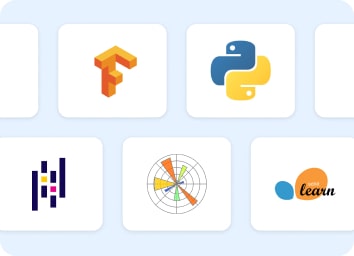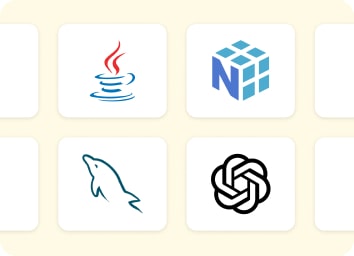Free Cyber Security Course with Certificate
Introduction to Cyber Security
Learn the fundamentals of secure online behavior and gain practical skills to safeguard your personal information. Enroll now to protect yourself and your online presence from threats.

Ratings
Level
Learning hours

Learners
Skills you will learn
About this course
Get started on your journey to becoming a cybersecurity expert with our comprehensive Introduction to Cyber Security course. This course covers everything from the basics of cyber security, including key concepts and popular attacks, to advanced topics such as cryptography, security goals and their implementations, and designing security systems. You will also learn about vulnerabilities such as buffer overflow and participate in a case study on a real-world WhatsApp attack. This course is designed to be hands-on and engaging, with practical projects, case studies, and demonstrations to help you master the skills you need to succeed in the field of cybersecurity. Join us now and take the first step towards a rewarding career in this exciting and fast-paced industry.
After this free, self-paced, beginner-level guide to Introduction to Cyber Security, you can enroll in the Cyber Security courses and embark on your career with the professional Post Graduate certificate. Learn various concepts in depth with millions of aspirants across the globe!
Course Outline
This module gives you an introduction an definition to cybersecurity.
You will understand the criteria to satisfy to call a system secured and understand CIA concepts in cyber security with examples in this section.
In this section, you will understand the organization's motivation to implement a secured cyber security strategy and the hacker's motivation to break into the system. You will also learn about various cloud service providers and why there is a shift to cloud storage.
This section will brief you on ransomware, botnet attacks, social engineering attacks, cryptocurrency hijacking, and phishing attacks.
This section will explain ransomware in detail with the WannaCry Ransomware cryptoworm attack for the bitcoin cryptocurrency example.
Frequently Asked Questions
Will I receive a certificate upon completing this free course?
Is this course free?
Is the Introduction to Cyber Security course a certification course?
What are the prerequisites required to learn Cyber Security course?
Introduction to Cyber Security is a beginner-level course. Before you begin with this course, you will have to do a little homework on basic computer skills, networking, and cyber security measures if you do not have a thorough understanding of it.
Will I have lifetime access to this free course?
Yes, once you enroll in this Cyber Security free course, you will have lifetime access to this Great Learning Academy's free course. You can log in and learn at your leisure.
Introduction to Cybersecurity
Securing systems, networks, and software from digital or virtual threats is known as Cybersecurity. Given the evolution of cybersecurity attacks and the growing trend of technology and hacks available to cybercriminals, it is critical to deploy effective cybersecurity measures. These cyber-attacks typically gain access to, alter, or even destroy important information to extort money from users or cause a business operation to be disrupted.
No one can bear to disregard the necessity of cybersecurity any longer. With these attacks, the risk of data breaches, the loss of confidential information, and damaging a company's reputation increases. Today, knowing the many types of cyber threats and implementing cybersecurity measures to prevent them is critical. Thus, with this Introduction to Cybersecurity free online course, we hope to impart that needed information.
Types of Cyber-attacks
Cybercriminals use malicious codes to alter the computer's data, logic, or code. Below are the types of Cybersecurity Attacks:
- Phishing Attack
- Man in the Middle Attacks
- SQL Injection Threat
- Distributed Denial of Service
- Drive-by Attack
- Cross-Site Scripting
- Password Attack
- Ransomware Attack
- Eavesdropping Attack
- AI-powered Attack
1. Phishing Attacks
Cyber terrorists use phishing to attack any device or software, and they use this technique to steal a user’s data from the internet or computer-connected device. Login credentials, credit card numbers, and passwords are usually attacked during Phishing attacks.
These criminals pretend to be someone their victims can trust. They then trick them into opening a message, email, or link. The victim’s system freezes shortly after clicking the link, and their sensitive information becomes accessible to the hacker.
For example, they often target your spam folder in your email inbox in the form of links, etc. Such spam can be a window for hackers to steal funds, make unauthorized purchases, or take over your entire computer. Phishing can cause security breaches that can have disastrous and long-lasting effects on a victim. There are several types of phishing attacks which include:
Whale Phishing- High-profiled employees like CEOs are targeted and tricked into making transfers to the attacker.
Spear Attack- Email targeted threat to an individual or organization.
Pharming- Fraudulent act that directs users to a fake page that looks like the original to steal from them.
2. Man-in-the-middle attack
It is a security attack where the cybercriminals place themselves between the communication system and the server. This could be when you are on a call with your manager, and they have shared some sensitive information with you over the phone. In man-in-the-middle attacks, a criminal will be listening to that conversation and obtaining the information you share with others.
Man-in-the-middle is by far the sneakiest attack by criminals. Vulnerable WiFi connections and communication lines are the most accessible means to carry out this security breach. The three common types of man-in-the-middle attack are:
Session Hijacking- Hacker takes control of the session between the network server and the victim.
IP spoofing- This security breach provides access to the hacker by tricking the user into communicating with a known entity.
3. SQL Injection Treat
In SQL, you make queries, and in the case of SQL injection threats, the attacker sends a malicious query to the device (a computer, phone, etc.) or a server. The server is then forced to expose sensitive information.
For example, a cybercriminal will be able to create a query that disrupts and gets into the database of your webpage through SQL injection. All the data, like your customers’ details, amount paid, and other confidential information, can then be released by the query.The daunting part of this cyber-attack is that the attacker can get hold of sensitive information and alter or wipe them thoroughly.
4. Distributed Denial of Service (DDoS) Attack
This cyber-attack overwhelms a network, system, or computer with unwanted traffic. The attacker bombards the system or server with high-volume traffic that its bandwidth and resources cannot handle. Hence, they will not be able to respond to requests. For example, a gardening website that notices a sky-rocketed number of visits of unknown users in a day may be under a DDoS attack.
Distributed Denial of Service attacks usually does not result in identity theft or loss of vital information. However, it will cost a lot of money to rerun the server.
5. Drive-by Attack
They are security threats that download unwanted materials from websites and spread malware by planting code on the page. For instance, pop-ups that do not relate to what you are searching on the internet. Such pop-ups are drive-by attacks.
Unlike other cyber-attacks, a drive-by download does not need you to do anything to enable the attack on your computing device. The best way to protect yourself from such threats is to update your internet browsers frequently. Also, do not leave too many apps and programs on your devices open.
6. Cross-Site Scripting (XSS)
It's an attack where an attacker sends malicious code to a reputable website, and it happens only when a website allows a code to attach to its code. The attacker bundles together two scripts and sends them to the victim. As soon as the script executes, the attacker receives a cookie. With this type of cyber-attack, hackers can collect sensitive data and monitor the victim's activities.
For example, if you see a funny-looking code on your government’s page, an attacker is probably trying to access your device through Cross-Site Scripting.
7. Password Attack
It is an attempt to steal passwords from a user. Since passwords are the most common authentication means, attackers are always looking for ways to use this cyber-attack. Two standard techniques they use to get a user’s password are:
Brute-force guessing- This entails using different random words, hoping that one of them would be the correct password. If the hacker knows their victim, they can apply logic while guessing and try the person’s title, name, job, or hobbies as the password.
Dictionary Attack- The hacker uses some of the common passwords to access the user’s device. For instance, 1234 or ‘Abcde’ are passwords that many people use on their devices, and these two are at the top of the list of common ones an attacker will try out. To protect yourself from either of these two password attacks, implement a lockout policy to your cybersecurity.
8. Ransomware Attack
In this type of security breach, the malware prevents users from accessing the data they stored on a server or database. The hacker then sends out a threat demanding a ransom, and else they would expose or delete the data.
9. Eavesdropping Attack
It is similar to the man-in-the-middle attack, but it does not allow a secure connection between the user and a server. Theft of data and information occurs after sending them out, so they do not get across to the server.
Unsecured and weak network transmissions allow this security breach to thrive. Any device within the network is susceptible to an eavesdropping attack from hackers.
10. AI-Powered attacks
Almost every gadget has some application of AI in it, which heightens the scare of an AI-powered cyber-attack. Such security threats will have the most devastating effects as artificial intelligence can be hacked by autonomous cars, drones, and computer systems. AI can also shut down power supplies, national security systems, and hospitals.
Impact of Cyber Attacks
Cybersecurity attacks can cause a lot of damage in various ways, especially in the following areas:
Economic costs: This involves the theft of intellectual property, corporate information, disruption in trading, and the cost of repairing damaged systems.
Reputational costs: This includes loss of consumer trust and loss of future customers to competitors due to poor media coverage.
Regulatory costs: GDPR and other data breach laws can impact an organization to suffer from regulatory fines or sanctions due to these cybercrimes.
Regardless of the size, all businesses need to understand cybersecurity threats and methods to mitigate them because sooner or later, they will face some kind of issue. This includes regular training on the subject and a framework to work with to reduce its risks of data leaks and breaches. Solidify your knowledge via this Introduction to Cybersecurity course and ensure you never have to suffer from such attacks.
Importance of Cybersecurity
Because of worldwide connectivity and the use of cloud services to store sensitive data, the world faces an expanding number of cybersecurity threats. Your organization's chance to be the victim of a successful cyber-attack or data breach is on the climb, thanks to poor cloud service configuration and increasingly adept cyber-criminals. Apart from corporate entities, a cybersecurity attack on an individual can end in everything from identity theft to extortion attempts and the loss of vital data such as family photos. Cybersecurity is critical because it protects our sensitive data, such as Personally Identifiable Information (PII), Protected Health Information (PHI), personal information, intellectual property data, and many other types of data, from digital theft and loss.
Everyone benefits from modern cyber defense programs. Many layers of protection are dispersed across computers, networks, and applications in an effective cybersecurity strategy. As a result, to develop an effective defense against cyber threats, an organization's people, procedures, and technology must all complement one another. As a business owner or user of technical gadgets, you may be vulnerable to cyber-attacks like these. It's no wonder why cyber security specialists are in high demand in today's industry. So, complete the free Cybersecurity course and kickstart your career in this highly demanding field.



















.jpg)



 (1).jpg)

.png)
.png)





.png)
.png)
.png)
.png)





 (1).png)









.jpg)





